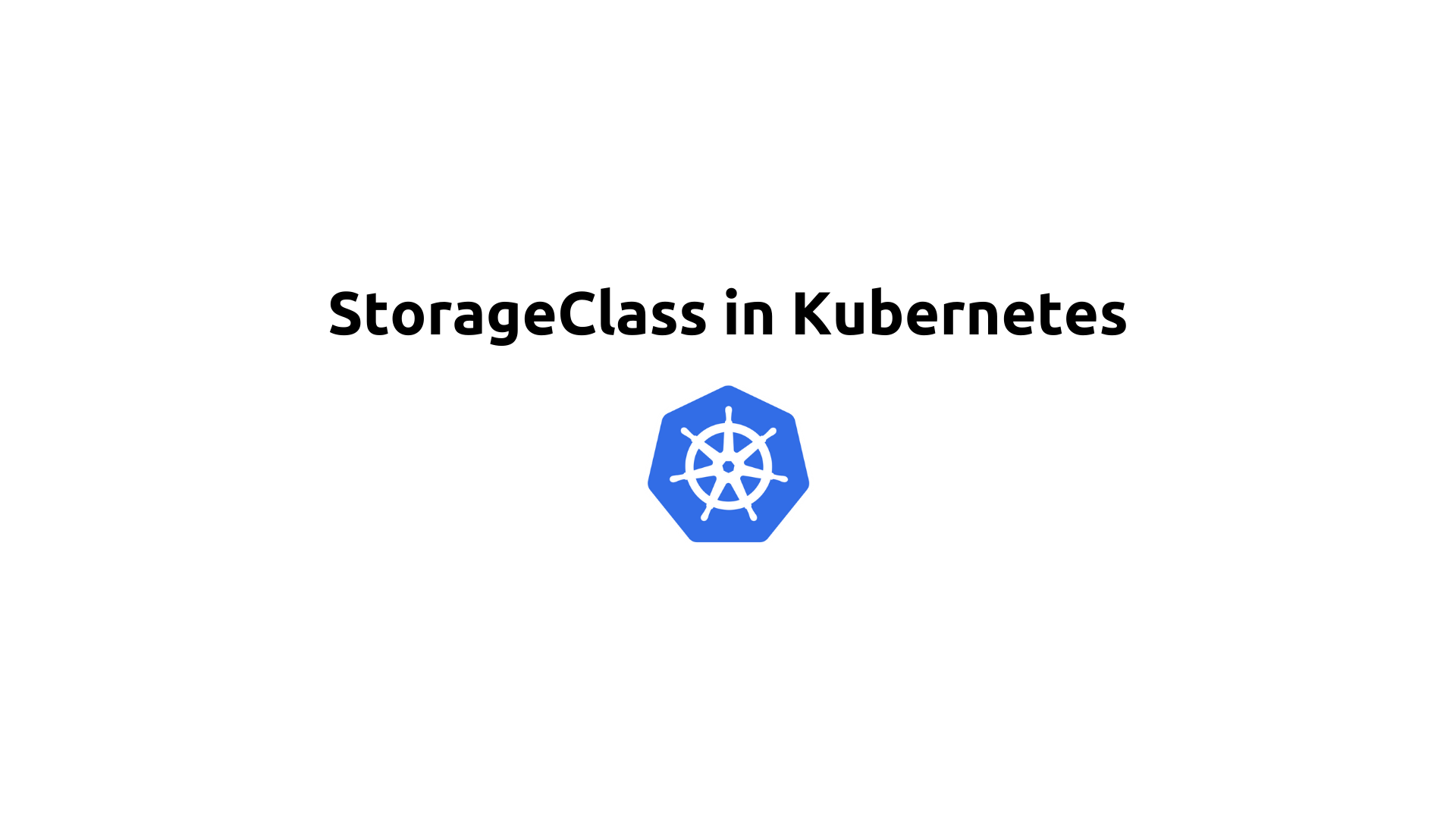StorageClass in Kubernetes
 Saurabh Adhau
Saurabh Adhau
Introduction
In Kubernetes, managing persistent storage for applications is a critical aspect. The StorageClass resource is a powerful tool that simplifies the dynamic provisioning of storage in Kubernetes clusters. This article delves into the concept of StorageClass, its use cases, examples, and benefits.
What is a StorageClass?
A StorageClass in Kubernetes is a way to define the "class" of storage for persistent volumes. It abstracts the underlying storage provisioner and dynamically allocates storage resources based on predefined configurations. Each StorageClass defines a provisioner, parameters, and reclaim policy, among other settings.
Use Cases of StorageClass
1. Dynamic Storage Provisioning
Dynamic provisioning allows storage resources to be automatically created when a PersistentVolumeClaim (PVC) is made. This eliminates the need for pre-provisioning storage, making storage management more efficient.
2. Custom Storage Configurations
Different applications might have different storage requirements, such as performance, replication, or backup policies. StorageClass allows creating custom configurations tailored to specific application needs.
3. Multi-Tenant Environments
In environments where multiple tenants share the same Kubernetes cluster, StorageClass helps provide isolated and customized storage solutions for each tenant, ensuring that each application gets the appropriate storage based on its requirements.
Benefits of StorageClass
Automation: Automates the creation and management of storage resources, reducing manual intervention.
Flexibility: Provides the flexibility to define multiple storage configurations within the same cluster.
Efficiency: Enhances resource utilization by dynamically provisioning storage only when needed.
Customization: Allows for custom storage parameters that can cater to different performance and availability requirements.
Examples of StorageClass
Example 1: Creating a Basic StorageClass
Here's an example of creating a basic StorageClass using the Google Cloud Platform (GCP) persistent disk as the provisioner.
apiVersion: storage.k8s.io/v1
kind: StorageClass
metadata:
name: standard
provisioner: kubernetes.io/gce-pd
parameters:
type: pd-standard
replication-type: none
reclaimPolicy: Retain
volumeBindingMode: Immediate
Example 2: Creating a StorageClass for AWS EBS
This example demonstrates creating a StorageClass for AWS Elastic Block Store (EBS).
apiVersion: storage.k8s.io/v1
kind: StorageClass
metadata:
name: fast
provisioner: kubernetes.io/aws-ebs
parameters:
type: gp2
fsType: ext4
reclaimPolicy: Delete
volumeBindingMode: WaitForFirstConsumer
Example 3: Using a Custom Provisioner
This example shows how to use a custom provisioner for a network file system (NFS).
apiVersion: storage.k8s.io/v1
kind: StorageClass
metadata:
name: nfs
provisioner: example.com/nfs
parameters:
server: nfs-server.example.com
path: /exported/path
reclaimPolicy: Retain
volumeBindingMode: Immediate
Use Case Scenarios
Scenario 1: Web Application with High I/O Requirements
A web application that handles a large number of transactions per second might require storage with high I/O performance.
Solution: Create a StorageClass that uses high-performance SSDs.
apiVersion: storage.k8s.io/v1
kind: StorageClass
metadata:
name: high-performance
provisioner: kubernetes.io/aws-ebs
parameters:
type: io1
iopsPerGB: "10"
fsType: ext4
reclaimPolicy: Delete
volumeBindingMode: WaitForFirstConsumer
Scenario 2: Data Analytics Platform
A data analytics platform may need storage that supports large volumes of data with the ability to scale dynamically.
Solution: Create a StorageClass that provisions large persistent disks.
apiVersion: storage.k8s.io/v1
kind: StorageClass
metadata:
name: large-disks
provisioner: kubernetes.io/gce-pd
parameters:
type: pd-ssd
replication-type: none
reclaimPolicy: Retain
volumeBindingMode: Immediate
Scenario 3: Multi-Tenant SaaS Application
A Software-as-a-Service (SaaS) application serving multiple clients needs isolated storage for each tenant.
Solution: Create multiple StorageClass resources, each tailored to the needs of different tenants.
apiVersion: storage.k8s.io/v1
kind: StorageClass
metadata:
name: tenant-a
provisioner: kubernetes.io/aws-ebs
parameters:
type: gp2
fsType: ext4
reclaimPolicy: Delete
volumeBindingMode: WaitForFirstConsumer
---
apiVersion: storage.k8s.io/v1
kind: StorageClass
metadata:
name: tenant-b
provisioner: kubernetes.io/aws-ebs
parameters:
type: st1
fsType: ext4
reclaimPolicy: Delete
volumeBindingMode: WaitForFirstConsumer
Conclusion
StorageClass in Kubernetes is a versatile and powerful feature that enhances the management of persistent storage. By abstracting the details of storage provisioning, it allows for dynamic, efficient, and customized storage solutions that can meet the diverse needs of modern applications. Whether you are running high-performance web applications, large-scale data analytics platforms, or multi-tenant SaaS applications, StorageClass provides the flexibility and efficiency needed to manage storage effectively in a Kubernetes environment.
Subscribe to my newsletter
Read articles from Saurabh Adhau directly inside your inbox. Subscribe to the newsletter, and don't miss out.
Written by

Saurabh Adhau
Saurabh Adhau
As a DevOps Engineer, I thrive in the cloud and command a vast arsenal of tools and technologies: ☁️ AWS and Azure Cloud: Where the sky is the limit, I ensure applications soar. 🔨 DevOps Toolbelt: Git, GitHub, GitLab – I master them all for smooth development workflows. 🧱 Infrastructure as Code: Terraform and Ansible sculpt infrastructure like a masterpiece. 🐳 Containerization: With Docker, I package applications for effortless deployment. 🚀 Orchestration: Kubernetes conducts my application symphonies. 🌐 Web Servers: Nginx and Apache, my trusted gatekeepers of the web.